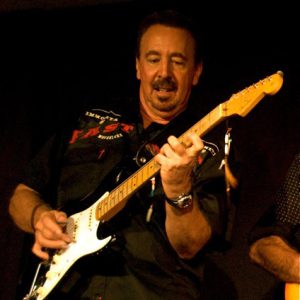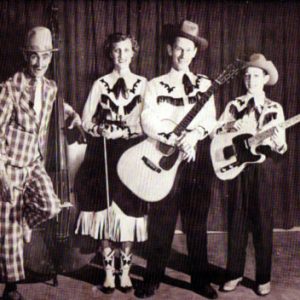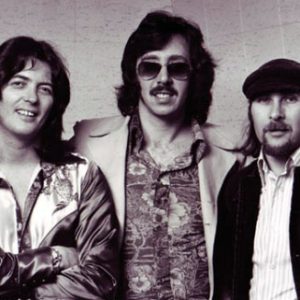calsfoundation@cals.org
Louie Shelton (1941–)
Millions of people have heard Louie Shelton’s smooth guitar-playing on hit records and albums without knowing who he was. Since the 1960s, he has worked as a session guitarist or a producer for Barbra Streisand, Whitney Houston, John Lennon, Lionel Richie, Boz Scaggs, Stevie Wonder, the Jackson Five, Seals and Crofts, Marvin Gaye, and many other famous pop, rock, and jazz musicians.
William Louis Shelton was born on April 6, 1941, in Little Rock (Pulaski County) but grew up in the Levy neighborhood of North Little Rock (Pulaski County). He was the youngest child and only son of five children born to William Lewis Shelton and Carrie Lois Middleton Shelton. His mother was a housewife, and his father was in law enforcement, serving as chief of the North Little Rock Police Department around the time Louie Shelton was born. Shelton grew up in poverty but spent his early years teaching himself to play the guitar. He dreamed of playing professionally, often spending his nights listening to the radio and learning to duplicate intricate guitar pieces made famous by Chet Atkins and Jimmy Bryant. He was also heavily influenced by jazz greats Johnny Smith and Wes Montgomery.
By the time he was twelve, Shelton’s talent caught the attention of Shelby Cooper and the Dixie Mountaineers, who invited him to join their band. The foursome played regularly on the Barnyard Frolics, a Grand Ole Opry–style program broadcast live on KLRA from Robinson Auditorium in Little Rock. As a result of the media coverage, the Dixie Mountaineers started performing five days a week on the radio and had a regular television show on local ABC affiliate KATV. Seeing Elvis Presley perform in Pine Bluff (Jefferson County) in the early 1950s intensified his interest in rock and roll, and Shelton joined a band that played regularly at Club 70 in North Little Rock.
Shelton left Little Rock in 1958 and moved to Albuquerque and Santa Fe, New Mexico, where he started a band. He also met Glen Campbell, a fellow musician and native Arkansan, there. Later that year, he decided to follow Campbell to Los Angeles, California, hoping his friend could help him break into lucrative session playing. However, his hopes for a quick transition into studio work did not materialize. Over almost a decade, Shelton joined or formed several bands. He teamed up with Jimmy Seals and Dash Crofts in a group called the Dawnbreakers in Los Angeles in 1966. Through that association, he also met musical entrepreneur Marcia Day and her five daughters.
Shelton married Betty Deaguero on May 29, 1959, in Santa Fe; they had three daughters during their nine years of marriage. Shelton later married Marcia Day’s daughter Donadell (Donnie) Feinberg on August 9, 1969; they have two children. During this era, Shelton converted to the Bahá’í Faith, which influenced the rest of his life and his music, especially his work with Seals and Crofts.
By the middle 1960s, another opportunity came through a demo session with songwriters/producers Tommy Boyce and Bobby Hart. One of the duo’s first projects was the creation and marketing of the band the Monkees, as well as the television show of the same name. They were looking for a signature sound to enhance what they hoped would be a hit record on the Monkees’ first album. They asked Shelton to come up with some opening chords. What resulted was the now-famed guitar riff that opens the song “Last Train to Clarksville.”
As a result of playing on that hit pop tune, Shelton became highly sought after as a session musician, going on to work with famous music producers Phil Spector, Quincy Jones, and others. By the late 1960s, he had created music behind the scenes for the Jackson Five hits “I Want You Back,” “ABC,” and “I’ll Be There.” Simultaneous to some of his busiest years as a session guitarist, he was playing music for several television shows, including The Glen Campbell Goodtime Hour.
Shelton had also been introduced to production work through Herb Alpert of A&M Records. He decided to turn his talents to producing records and began churning out hit songs with former band mates and friends Jimmy Seals and Dash Crofts. Under Shelton’s direction, Seals and Crofts produced five gold-selling albums, including Summer Breeze (Warner Bros., 1972), which spent eighteen weeks on the pop music charts. In 1977, Billboard magazine wrote of Shelton that he “has played on perhaps more ‘hits’ than any other guitar player in the industry.”
However, by 1984, Shelton and his family had had enough of the fast-paced life in Los Angeles, and after a vacation to Australia, the family decided to relocate to that country. There, he produced several Australian musicians, including Peter Cupples and Noiseworks, among others.
Shelton remained in Australia until 1996, when a desire to be closer to aging family members prompted a return to the United States. He settled in Nashville, Tennessee, where he produced several albums, including one for Jimmy Seals’s brother, Dan Seals. His first solo album compilation was Guitar (Lightyear, 1996), followed by Hot and Spicy (1998), Urban Culture (1999), and Something Live (2000).
In 2005, Shelton returned to Australia but continues to make trips back to the United States. He was inducted into the Musicians Hall of Fame in Nashville in October 2009 and the Arkansas Entertainers Hall of Fame in 2013.
For additional information:
Backstage. http://backstagemovie.blogspot.com/ (accessed February 2, 2022).
Bryson, Alan. “Louie Shelton: In Session.” All About Jazz. http://www.allaboutjazz.com/php/article.php?id=35286 (accessed February 2, 2022).
Ross, Michael. “Long-Overdue Love for Louie.” Premier Guitar, March 5, 2020. https://www.premierguitar.com/articles/30126-Louie-Shelton-Studio-Guitar-Wrecking-Crew-Monkees-Motown (accessed February 2, 2022).
Shelton, Louie. “Interview with Louie Shelton.” October 19, 2010. Audio at Butler Center for Arkansas Studies, Bobby L. Roberts Library of Arkansas History & Art, Central Arkansas Library System: Louie Shelton Interview (accessed February 2, 2022).
Special insert, Billboard (February 26, 1977).
Lisa H. Armstrong
North Little Rock, Arkansas
 Arts, Culture, and Entertainment
Arts, Culture, and Entertainment Louie Shelton
Louie Shelton  Louie Shelton with the Dixie Mountaineers
Louie Shelton with the Dixie Mountaineers  Louie Shelton with Seals and Crofts
Louie Shelton with Seals and Crofts 




Comments
No comments on this entry yet.